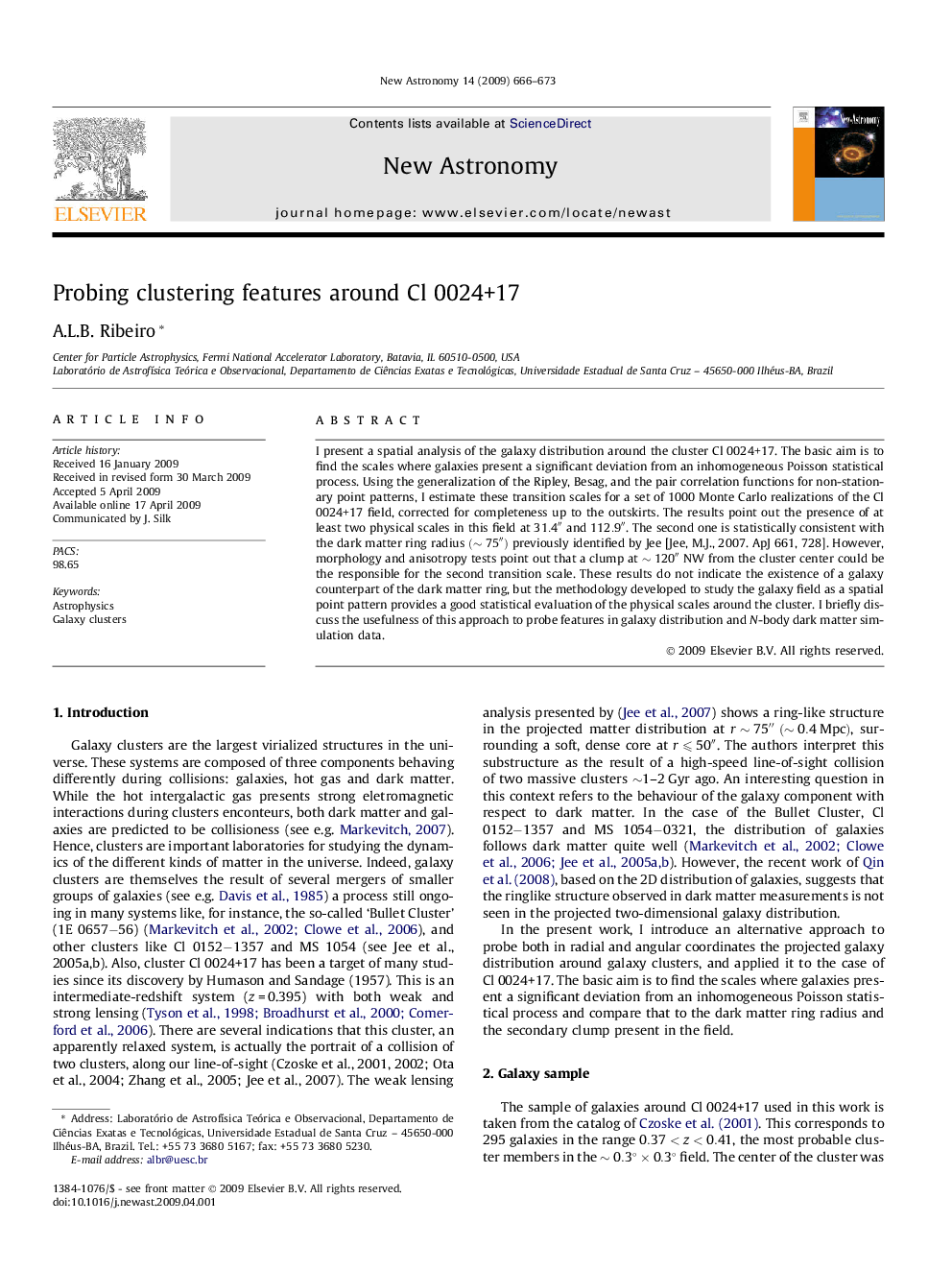| Article ID | Journal | Published Year | Pages | File Type |
|---|---|---|---|---|
| 1779313 | New Astronomy | 2009 | 8 Pages |
Abstract
I present a spatial analysis of the galaxy distribution around the cluster Cl 0024+17. The basic aim is to find the scales where galaxies present a significant deviation from an inhomogeneous Poisson statistical process. Using the generalization of the Ripley, Besag, and the pair correlation functions for non-stationary point patterns, I estimate these transition scales for a set of 1000 Monte Carlo realizations of the Cl 0024+17 field, corrected for completeness up to the outskirts. The results point out the presence of at least two physical scales in this field at 31.4â³ and 112.9â³. The second one is statistically consistent with the dark matter ring radius (â¼75â³) previously identified by Jee [Jee, M.J., 2007. ApJ 661, 728]. However, morphology and anisotropy tests point out that a clump at â¼120â³ NW from the cluster center could be the responsible for the second transition scale. These results do not indicate the existence of a galaxy counterpart of the dark matter ring, but the methodology developed to study the galaxy field as a spatial point pattern provides a good statistical evaluation of the physical scales around the cluster. I briefly discuss the usefulness of this approach to probe features in galaxy distribution and N-body dark matter simulation data.
Keywords
Related Topics
Physical Sciences and Engineering
Physics and Astronomy
Astronomy and Astrophysics
Authors
A.L.B. Ribeiro,
